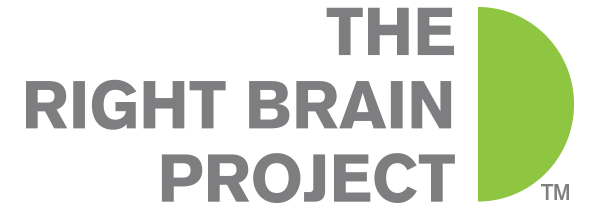by Julian Ryder, Founder + Chief Creative Officer
What if you were able to create game plans that gave you an advantage in accomplishing your goals? "Create" being the operative word here. Imagine applying the same principles that are applied to designing products, web sites and logos to personal and business-related issues like weight gain or employee performance. Most people would agree that designers see the world from a different perspective than the rest of us. Quite simply, they see things that others don’t. Just like engineers have the ability to solve a problem with numbers, designers can take the same problem and solve it with design—two different solutions with two different outcomes. What might be possible if you brought the eyes of a designer to your projects? What kind of extraordinary results would you produce?
How is it done?
It’s not as difficult as you might think. It does, however, require a willingness to step outside of your comfort zone. When designers take on new projects, they don’t go right to the computer and start designing, there’s a process. Just like other businesses, designers have to research what they are being asked to work on, they review the history of the project, they collaborate with others, and they prepare a brief that serves as a guide to what the end result will be. You should recognize this as traditional business practice and well within your comfort zone. Here’s what distinguishes a “designer.”
It’s their thinking process. The creation of new ideas, conceptualizing, prototyping and testing. The thinking process comes after the goals have been identified and after the plans have been written and after everyone is in agreement. It’s not magical or mysterious, and it’s not exclusive to “right brain” people, although they would like you to think it is. Creativity is available to anyone, anytime! To access it, you simply have to be willing to let go of what you know— the formulas, rules and regulations that you have always counted on to solve problems. Without these old practices to fall back on, you’ll find yourself in an unrecognizable place, a place that requires you to invent new ways of thinking. It’s the place where Einstein created his theory of relativity, where J.K. Rowling created Harry Potter and where Larry Page and Sergey Brin invented Google. This place should make you feel awkward and unfamiliar, and definitely out of your comfort zone. Like anything worthwhile, stepping into the shoes of a designer takes practice. The more you engage in the act, the better you become.
Take it for a spin.
If you’re interested in test-driving your creative abilities, here’s what I suggest. Choose to work on something that you really don’t have an answer for, something where your standard problem-solving abilities will be insufficient. It should be something that, if resolved, you’ll know that you caused this to happen by using your creative ability and not your standard problem-solving solutions. The item being worked on should be immediate, in other words, it requires attention now. It should have importance to you as an individual, or as a business, or as a community. You should do your due diligence before you start, know everything you need to know before engaging in the process. Work with people who have a vested interest in the outcome, people who can handle playing on an unfamiliar field and who are willing to improvise. Work in an environment that supports creativity. When our team works on creative projects, we like to work in the conference room with post-it notes and large pads of paper to write and draw on and tape to the wall. While engaged in the process, look for ideas and thoughts that don’t fit the usual pattern, that don’t sound familiar, ideas that have never been discussed before—this is usually where the gold is. Always keep things moving forward, allow yourself and everyone to say whatever comes to mind, even really stupid stuff. Nothing stops the process faster than invalidating an idea. If you hear an idea or a concept that strikes a chord, dig into it and see where it takes you. You’ll discover that after doing this for a while, you will generate more great ideas then you can accommodate.
Keep in mind the creative process is a journey and once you get started there’s no telling where you might end up. Who knows, you could be the next J.K. Rowling or Larry Paige and Sergi Brin, on the other hand you might invent a new way to lose that extra ten pounds.

